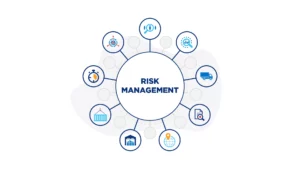The world of information technology is in constant flux, and as an IT manager, understanding and staying ahead of new technologies is a crucial part of the job. One such technology that has been making waves in recent years is Secure Access Service Edge (SASE).
Understanding SASE, however, can be daunting especially if network technologies seem overly complex. But worry not. We’re here to distil the essence of SASE into manageable bites. Let’s explore how SASE, with its crucial components, can be your game-changer for improved network security and performance.
The Role of SD-WAN in SASE
Software-Defined Wide Area Networking (SD-WAN) plays a vital role in the SASE framework. Traditionally, WAN networks relied heavily on hardware and were difficult to manage and scale. With SD-WAN, network control becomes software-based, making it easier to manage, more flexible, and highly scalable.
In the context of SASE, SD-WAN provides the backbone for connecting different network elements. By prioritising traffic and integrating security policies directly into your network management, SD-WAN enhances both the performance and security of your network.
SASE and Cloud Security
One of the main drivers for SASE adoption is the widespread shift to cloud computing. Traditional network security is often not sufficient to handle the unique security challenges of the cloud.
SASE bridges this gap by integrating cloud security services into its architecture. This allows for real-time threat detection, prevention, and response, regardless of where the data resides— on-premise or in the cloud. The integrated cloud security of SASE reduces the complexity and increases the effectiveness of protecting sensitive data in the cloud environment.
SASE and Zero Trust Networks
Zero Trust Network is another critical component of the SASE model. The basic principle of Zero Trust is simple: “”Never trust, always verify””. In other words, every access request is treated as potentially dangerous, even if it originates from within the network.
SASE implements Zero Trust Networks by continuously verifying and validating the identity and permissions of every user and device accessing the network. It combines the principles of Zero Trust with its own security features to provide more comprehensive and effective network protection.
How SASE Changes Network Security
By converging network and security services into a single cloud-based platform, SASE fundamentally alters how we approach network security.
With SASE, security is no longer an afterthought but a foundational element built into the very fabric of your network. It simplifies the complex world of network security by unifying disparate services like SD-WAN, cloud security, and Zero Trust Networks under one umbrella. This not only makes managing network security simpler but also significantly improves its effectiveness.
Furthermore, as a cloud-native architecture, SASE can be easily scaled up or down depending on the needs of your organisation. This scalability, coupled with its robust security features, makes SASE an excellent choice for organisations looking to enhance their network security and performance.
By understanding the key components of SASE, IT managers can begin to leverage this technology to its fullest potential. It’s not just about keeping up with the trends; it’s about proactively driving performance and security in your network architecture. As we continue to navigate the ever-evolving digital landscape, tools like SASE will become increasingly important in our IT toolkit. So why wait? Take your first step into the world of SASE today.





